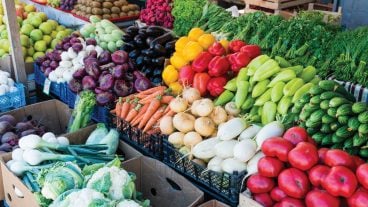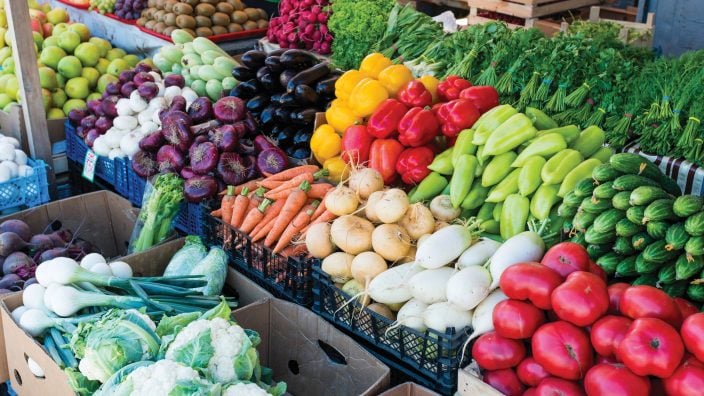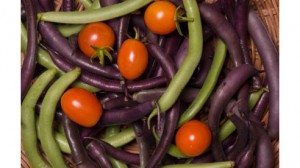Farmer’s Guide to Trucking Regulations available to Ohio Farm Bureau members
The guide includes a farm driver checklist, overview of state and federal regulations and exemptions, CDL qualifications and more.
Read More
One of the easiest vegetables to grow is beans. Beans are a member of the Fabaceae (Leguminosae) commonly known as the legume or pea family, which includes the edible crops of peas, soybeans, chickpeas, alfalfa and peanuts to name a few.
Green beans are called green not due to their color but because they are picked when they are immature. Any young bean may be called green.
Beans grow best in full sun with well drained, fertile soils. They do not grow well with wet roots. Beans should be planted after all danger of frost and the soil has warmed up (+65 degrees). Planting early where the soil temperatures are 50 degrees or less may result in poor germination.
Growing habits of beans:
Bush beans: Bush beans are just that; they grow on a bush. They grow as a mound and do not need to be staked or grown next to a trellis. Growing to only about 1 to 2 feet tall, the harvester will have to bend over to pick them which can be a problem. Bush beans are planted by seeds. Sow them about ½ to 1 inch deep and 3 to 4 inches apart. Leave 18 to 24 inches between rows so they are wide enough for the gardener to get through and harvest.
Recommended varieties of bush beans:
* Bush-green: Blue Lake 274, Kentucky Wonder bush, Festiva, Burpee Tender Pod, Tendergreen, Tendercrop, Provider, Bush Romano, Derby and Espada.
* Bush-wax: Carson, Goldcrop, Sungold. (Wax beans are a type of snap bean that are yellow in color but also have a waxy pod.)
* Bush-purple-pod: Royal Burgundy (color will wash out during cooking and leave a green pod)
Pole beans: Pole beans are a vine, growing with tendrils they need to be staked or grown on a trellis. These vines may grow to 7 or 8 feet tall; making harvest is a bit easier due to the beans being higher off the ground than bush beans. Pole beans usually have a longer harvest period than bush beans with a higher rate of production. Pole beans should be planted 4 to 6 inches apart with 3 feet between rows so that the entire plant gets sunshine. Place the trellis or cage when the seeds are planted so that beans may start to climb immediately.
Recommended varieties of pole beans:
* Pole-green: Fortex, Kentucky Wonder, Kentucky Blue, Blue Lake, and Northeaster, Romano.
* Yard Long: (16-20inch beans) Gita and Red Noodle
Half runner beans: Half runner beans grow to a height between that of bush and pole beans. Growing to about 3 feet taller than a bush, but shorter than a pole bean, half runner beans can be grown like a bush bean but trellising seems to increase the production of these plants.
Recommended varieties of half runner beans:
* White Half Runner, Pink Half Runner, and State Half Runner
For continuous harvest plant seeds every two to three weeks through mid-July. Read the seed package to determine the days to harvest and count backward from your area’s frost date to get a plant-by date. Harvesting regularly, daily or every two days, will keep the plants producing.
Other care tips:
* Beans need about 1 inch of water a week.
* Keep the garden weeded by hand pulling or shallow cultivation, this is particularly important the first 6 weeks after planting.
* Green beans should be picked when the seeds are about ¼ of full size, so make sure to remember the size of the seeds you planted. Seeds should not be bulging in the pod and the pods should be tender and break easily with a snap.
Beans as a vegetable garden crop are easy to grow with minimal care necessary for upkeep. They are a good crop for kids as the beans grow fairly quickly and the beans are fun to harvest. Green beans can be a tasty raw snack or eaten as a side dish at meal time.
Barbara Arnold is green corps coordinator at Franklin Park Conservatory.


The guide includes a farm driver checklist, overview of state and federal regulations and exemptions, CDL qualifications and more.
Read More


The Small-Scale Food Business Guide covers federal and state regulations for selling food products such as raw meat, dairy, eggs, baked goods, cottage foods, fruits and vegetables, honey and more.
Read More

ODA will enroll 500,000 acres into the program for a two-week sign-up period, beginning April 22, 2024, through May 6, 2024. Contact local SWCD offices to apply.
Read More

Katie Share of Columbus has been named ExploreAg and Youth Development Specialist for Ohio Farm Bureau.
Read More

Mary Klopfenstein of Delphos has been named Young Ag Professional and Ag Literacy Program Specialist for Ohio Farm Bureau.
Read More

The plan has been updated to give sole proprietors access to more rate stability and a smart solution that offers potential savings on health care.
Read More

The American Farm Bureau Federation, in partnership with Farm Credit, is seeking entrepreneurs to apply online by June 15 for the 2025 Farm Bureau Ag Innovation Challenge.
Read More

Adele Flynn of Wellington has been elected treasurer of the Ohio Farm Bureau Federation and now holds the third highest elected office in Ohio’s largest and most influential farm organization.
Read More

Producers are urged to work with their veterinarian to practice enhanced biosecurity measures and review and limit cattle movements within production systems.
Read More

The changing seasons bring with them the need to thoroughly inspect pole barns for any damages that may have occurred during the winter months.
Read More